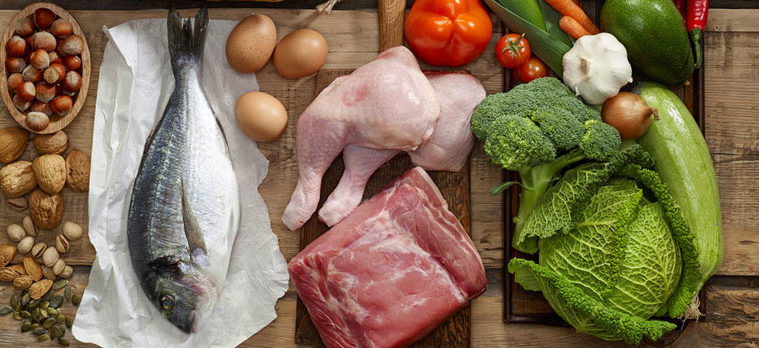Unless you’re still living in the Stone Age, you’ve probably heard of the Paleo Diet … oh, hang on, that was in the Stone Age. Anyway, it’s been pretty hard to miss. But what’s it all about?
‘Paleo’ is a reference to Paleolithic times – it means the “Old Stone Age” – and the diet has been promoted as a way of eating like our ancestors of about 2.5 million years ago might have done. Think about that for a minute….
They were hunters and fishers, but their diet would have included creatures (including insects and grubs) you wouldn’t consider. They were also scavengers for other predators’ leftovers. This was a time before agriculture, so they gathered wild foods, nothing like our fruits and vegetables. In addition, the life expectancy for those who survived childhood was about 33 years.
So eating exactly like a caveperson isn’t the point. Most of us go hunting in hypermarkets and gathering in the greengrocer’s.
Today, ‘Paleo style’ is more of a philosophical interpretation.
Paleo – fact or fad?
The Paleo diet has created some controversy, due to the promotion of different versions by various groups, high-profile celebrities and health practitioners. There are also disagreements, even arguments, about its benefits for modern human beings.
But if you look at what these approaches have in common it comes down to three major principles.
1. Eat mainly vegetables and proteins
This highlights the positive aspects of Paleo style eating. You can have unlimited amounts of fibrous, non-starchy vegetables (preferably organic) and a range of grass-fed meats, poultry, game and seafood (preferably wild caught). Healthy fats are allowed – from avocado, nuts and seeds, extra virgin olive oil, coconut oil or cream, and from duck, goose and chicken fat. If you want fruit, go for berries, lemons and limes. For seasonings, use herbs and spices, rather than salt.
Each meal should contain predominantly vegetables, with a moderate amount of protein and healthy fat
2. Eliminate (or limit) grains, legumes and dairy
The ‘Paleo’ argument here is that these foods were unavailable to people of the Old Stone Age. Modern theories link them to inflammation in the body.
3. Avoid sugar and processed foods.
Sugars are on the ‘no’ list; so are artificial sweeteners. Soft drinks and sports drinks are packed with them. Beware of fruit juices; they supply a too-easy way to consume sugar without the benefits or the feeling of fullness that prevents you from consuming more of the whole fruit.
Paleo style eating excludes ready-made packaged foods; they are highly processed, and usually contain added sugar and salt. Processed oils like canola, cottonseed, margarine and blended vegetable oils are the ‘bad fats’, and should be off the table and out of your kitchen!
Saying no to ‘fast food’ is a no-brainer, given that it tends to be loaded with fat, sugar and salt.
Whether or not you give it the label ‘Paleo’, this is essentially a healthy diet.
The benefits
- Improved blood sugar levels. By avoiding sugar ‘highs and lows’ the body has a better insulin response. Insulin helps to get sugar into the cells for energy production, but in excess can create inflammation in the body and drive fatty weight gain.
- More effective weight management. Studies have shown that if you follow the three principles above, and include exercise, you can achieve and maintain a healthy weight.
- Feeling less hungry. Eating more vegetables, protein and healthy fat means you feel fuller for longer. Avoiding sugar and processed foods helps control your appetite, and reduces cravings.
- Increased energy. When you eliminate the blood sugar ‘spikes’, you also get rid of the lows that send you looking for a sugar hit.
- Reduced inflammation. Sugar, processed and junk foods, transfatty acids and vegetable oils are inflammatory foods. Increasing your intake of healthy fats, fish and vegetables can lessen the effects of inflammation in your body, particularly in your joints.
The Paleo style diet is about changes in eating habits, but it’s part of a bigger picture. Exercise, mindfulness, stress management, and other lifestyle changes also have a part to play in your greater wellbeing.
Arrange to speak with a nutritionist, who will give you some personalised advice about your diet and lifestyle and whether eating ‘Paleo style’ is for you.



